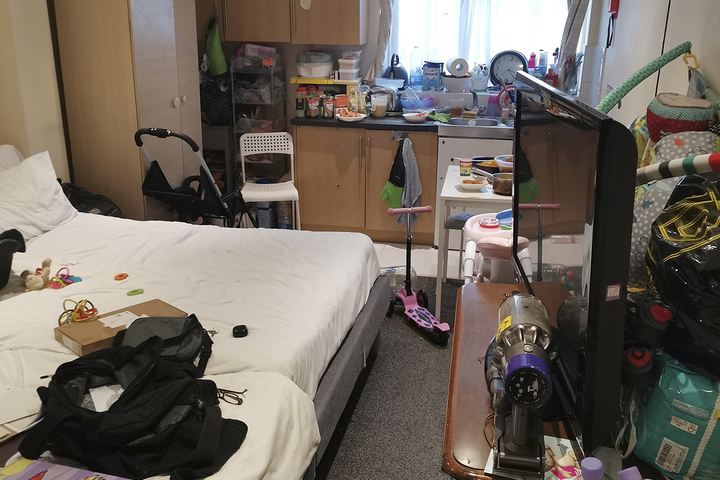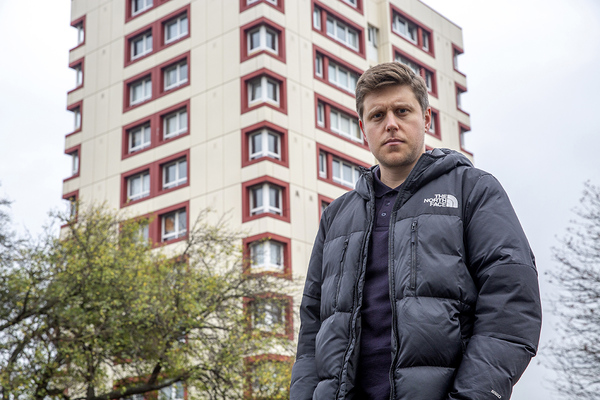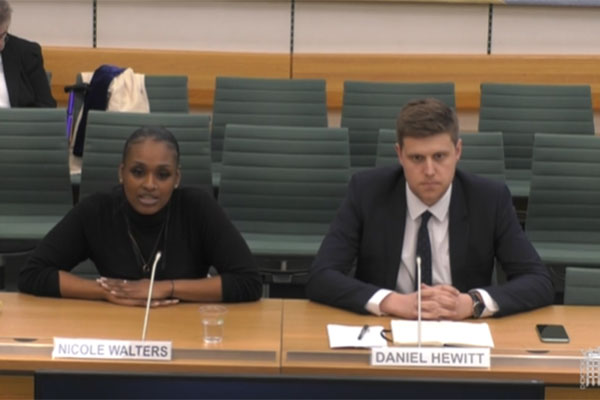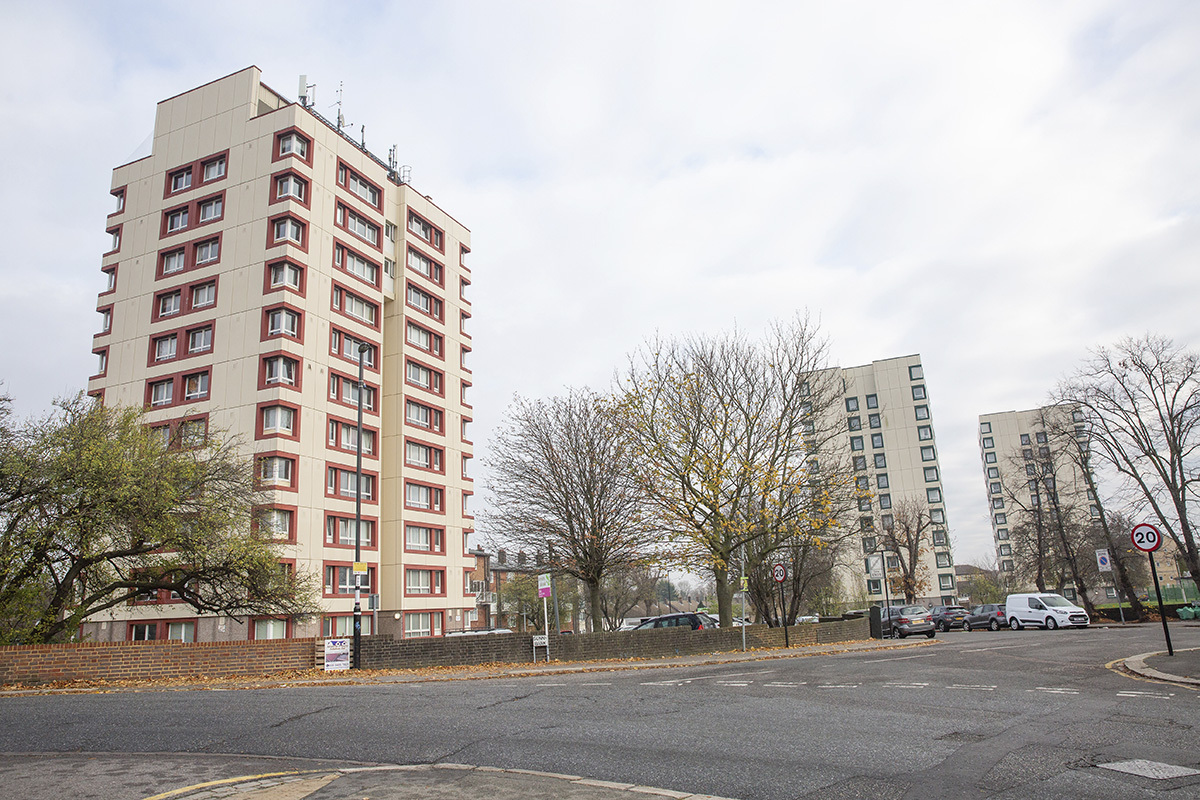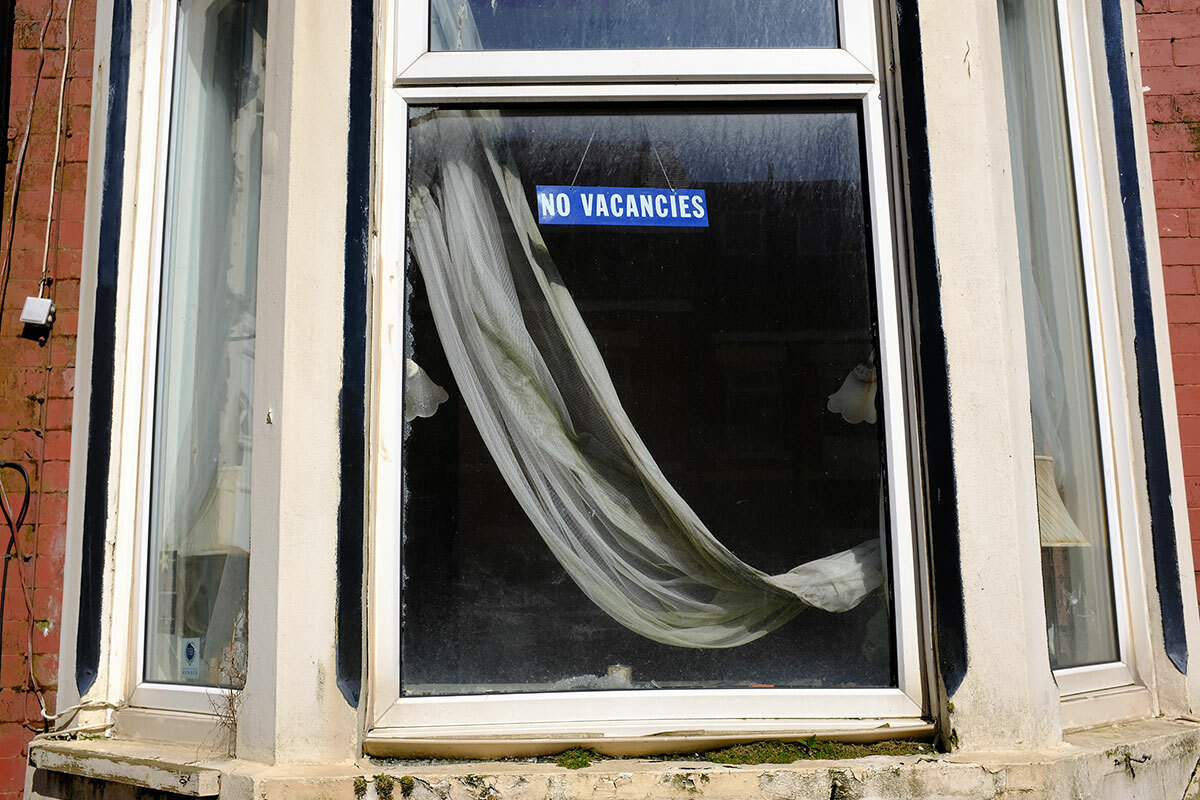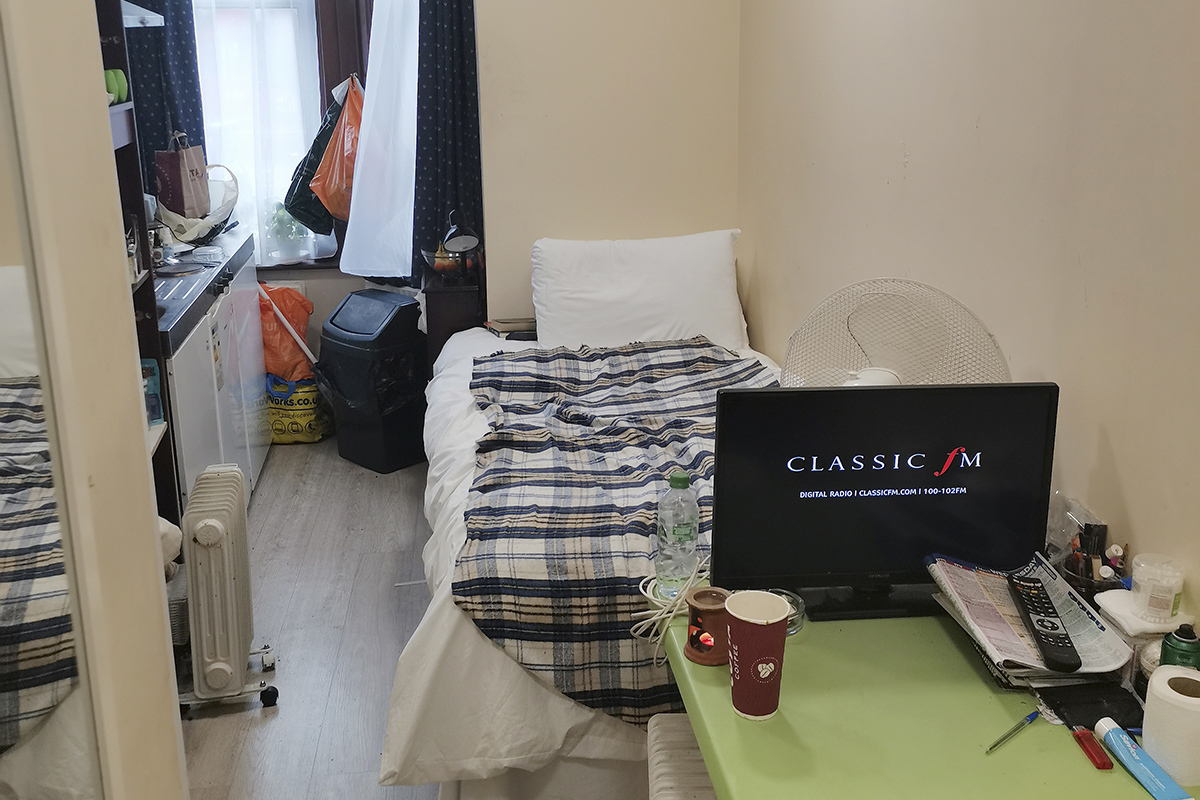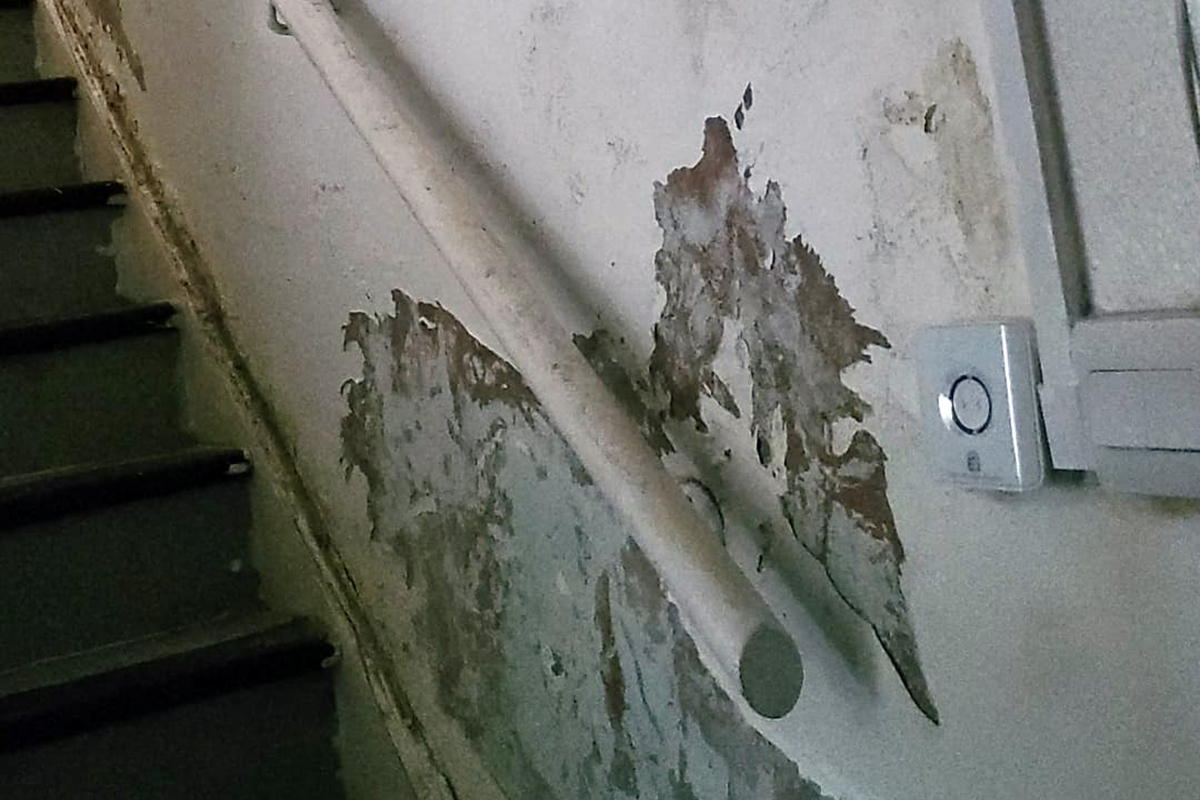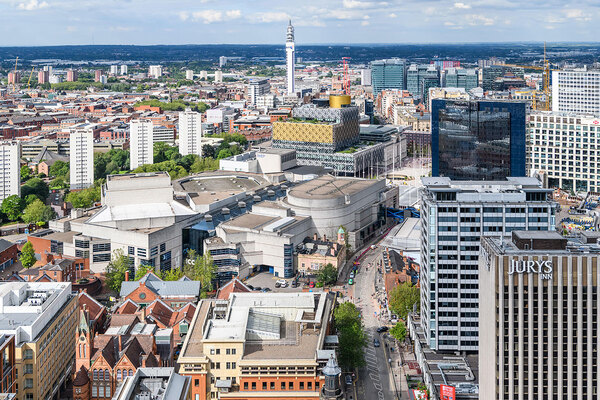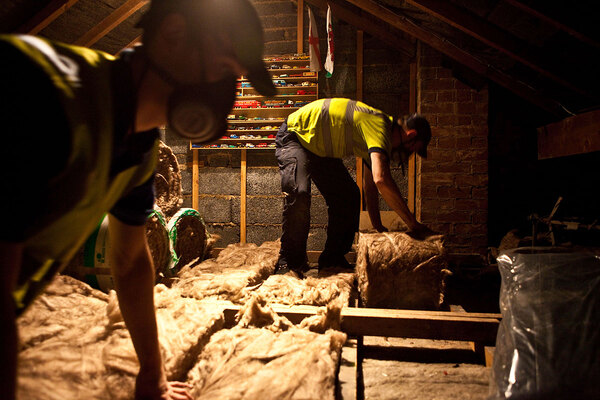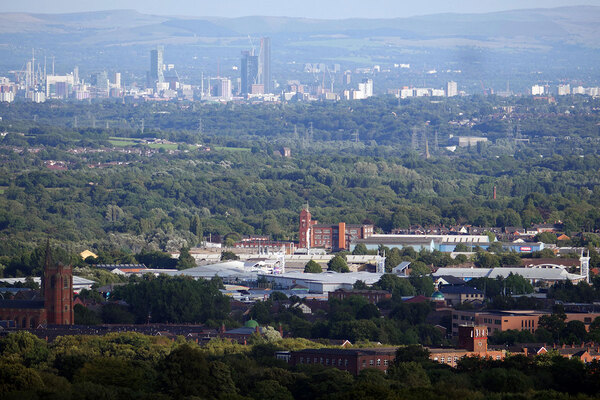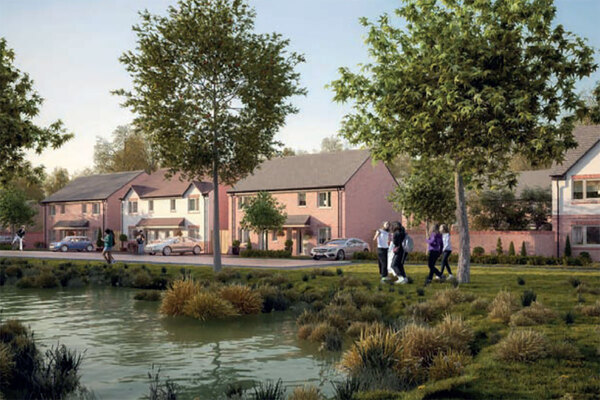‘We’ve got no dignity’: life in poor-quality temporary accommodation
New figures obtained by Inside Housing reveal the proportion of homeless families in London placed at risk because of hazards in their temporary housing. Lucie Heath meets the people struggling and explores what councils plan to do about it. Photography by Jack Simpson
On a busy street in Croydon, south London, behind metal bars, sits a complex of off-white coloured hotels. Inside, the building is a maze of corridors. Locked doors are spaced every few metres. Behind the doors, in very confined spaces, individuals, and in some cases families, can be found. They have been placed there by their council, often for months, as part of its duty to house homeless families in temporary accommodation.
Gilroy Court and Croydon Court are two of the buildings that make up the Croydon complex, but there are many more places like it scattered across London.
As Inside Housing enters Gilroy Court, a baby can be heard crying as we approach one of the rooms. When we knock, we are met by a mother who lives in the tiny space with her toddler and newborn. She is cooking dinner on two electric hobs less than a metre away from where she sleeps. She shows us the pram her two-year-old sleeps in at night; her baby sleeps in a car seat.
Behind a door at Croydon Court is John* (named changed), a 69-year-old man who has been living in his room for 18 months, after being placed there by Lambeth Council. He is in constant pain as he waits for a hip replacement. However, the hospital will not operate until he is moved to more suitable accommodation. As we sit on his bed, he shows us a picture on his phone of a rat he once caught next to his bed.
These are the tough living conditions faced by tens of thousands across the capital – in many cases far worse than what is described above. An investigation by Inside Housing has discovered that nearly one in five B&Bs and studios used to house homeless families were found to contain some of the worst hazards under council guidance, with many others containing a range of serious but lesser issues.
Inside temporary accommodation
The problem of poor conditions in temporary housing is not new. Gilroy Court and Croydon Court, for example, have been under scrutiny for years.
Last year, Inside Housing was one of many publications to write about the former after Steve Reed, MP for Croydon North, raised the alarm about poor conditions there during the pandemic. At the time, Croydon Council said it was investigating the accommodation “as a priority” and would “take appropriate action” if the standards it expected were not followed.
Ten years earlier, BBC Newsnight featured Gilroy Court as part of an investigation into the amount of time families were stuck in B&Bs. The council promised to inspect the hotel after the programme found examples of damp, rodent droppings, fire hazards and a lack of security.
Despite the negative press, Croydon and other councils continue to place homeless families in the hotel.
Croydon Council says it has worked with the hotel provider to make improvements, while the owner says it provides “high-quality” temporary housing that has been approved by the councils that place people there. Lambeth Council says it raises any issues it is aware of, such as pest control, with the hotel owners and makes sure they are addressed.
A big problem
- 96,060 households are in temporary accommodation
- 59,160 of them are in London
- There is a six-week limit on families living in B&Bs, but this is not enforced
This is of little comfort to the residents. “We’ve got no dignity. It’s like you’re being punished,” says John.
This is an opinion shared by many of the 100,000 people who find themselves in temporary housing. It is well known that the B&Bs, hotels and shared houses used by local authorities across the country to house homeless families are often in appalling conditions.
A report by Human Rights Watch found numerous examples of children’s rights being violated in temporary housing in London. Examples include a 15-year-old diagnosed with pneumonia after being placed in a converted metal container and a pregnant mother with three sons forced to share a bed in a studio flat.
Inside Housing spoke to several families who have spent long periods of time in temporary accommodation. They described conditions such as excessive cold, overcrowding and safety fears.
Pat Leatham is one of those people. The mother of one had to share a one-bedroom flat with her teenage son at the Fred Wigg Tower in Leytonstone, which she describes as a “building site” (see box).
‘We were mentally damaged by this’
Pat Leatham was moved into temporary accommodation by Waltham Forest Council in 2019. Ms Leatham had been living with her mother, but was forced to leave the property after her mum’s death. Originally, Ms Leatham and her son were moved into a house that they shared with 12 other people. She says she asked the council to come and look
at the conditions they were exposed to, but no one came.
After about seven weeks, Ms Leatham was moved to new accommodation, but what was awaiting her was “worse”. She was placed on the 10th floor of the Fred Wigg Tower in Leytonstone, a building she says “literally looks like a building site”. Pictures show wires hanging out of the wall and plaster crumbling off walls. There was sometimes sick and “waste matter” in the lifts, Ms Leatham says.
When Ms Leatham moved into the flat, she was given no furniture and was forced to sleep on blankets next to the only working radiator at the time. The flat only had one bedroom, despite her son being a teenager, so Ms Leatham spent the best part of two years sleeping on a chair.
“I can’t believe I actually got that low,” Ms Leatham says.
She adds it was impossible to get the flat warm, meaning her son was always cold.
After two years, Ms Leatham was able to leave the accommodation after successfully bidding for a housing association property, but the experience has stuck with her and her son. Ms Leatham says even looking at pictures of the building fills her with dread.
“What it does to you is just horrible. You always think you’re going to be homeless at some point. Although I’m settled somewhere, I still have in the back of my head, because we haven’t been here a year yet, ‘Oh my goodness, how safe are we?’”
Louise Mitchell, cabinet member for housing and homelessness prevention at Waltham Forest Council, says the council works hard to support homeless families and called on the government to help it build more affordable homes. The council has invested £25m in improving Fred Wigg Tower and its neighbour, John Walsh Tower.
The problem is not just in London. Simon Gale, chief executive of Justlife, a charity that supports families in temporary accommodation in Brighton and Manchester, has seen families face many of the same problems.
He says there is an “inconsistency of standards” even in a small city like Brighton with fewer providers. Some families will be given access to basic amenities, such as a bed and cooking facilities, while others will not.
One reason for this inconsistency in standards of temporary accommodation is a lack of regulation.
“There is a code of guidance, which guides local authorities on what they should and shouldn’t do, but nobody enforces it,” explains Siobhain McDonagh, MP for Mitcham and Morden who chairs the All-Party Parliamentary Group on Temporary Accommodation.
She says no one enforces the six-week limit on families living in B&Bs or the practice that councils should inform another local authority if it is placing a homeless family in temporary housing there. Authorities often do not even check what the accommodation is like before sending people there, she says, describing a time when her council placed families in a converted warehouse on an industrial estate without visiting first.
In numbers
19%
Buildings with at least one Category 1 hazard
72%
Percentage of Category 1 hazards related to fire safety
Residents in temporary accommodation also have very little access to redress.
“It doesn’t seem like there’s a really good sort of complaints procedure for people who are living in accommodation to raise complaints,” Mr Gale says. He says residents can be evicted for no reason on very short notice due to the nightly contracts many councils have with temporary accommodation owners.
To drive up standards, Ms McDonagh is calling for an “Ofsted-style inspectorate” of accommodation providers.
“We have Ofsted for schools and the social services department, and even though they’re not universally liked, they have been effective in making schools and local authorities look at what they do, because they know someone is watching,” she says.
London boroughs recently established their own joint inspection initiative, named Setting the Standard (StS) in a bid to improve conditions in the capital. Used by 31 of London’s 33 local authorities, StS comprises a central inspections team and IT system that shares information about nightly paid B&Bs and studio accommodation that can be used by councils in the city.
‘After we got there, I easily could have just walked in front of a bus’
Izabela Kikosicka and her three children were first placed in temporary accommodation by Waltham Forest Council in 2019.
She says she was evicted from this accommodation in November last year by enforcement agents with “no warning”. Ms Kikosicka had previously refused to be moved to private rented accommodation in Derby.
After being evicted, the council agreed to move her and her children into a house for one week, which Ms Kikosicka says they shared with “drug addicts and alcohol abuse”.
On the second night, she says someone tried to break into the property.
“The front door was broken so you could literally put your hand through the panel and open the door from outside,” she says.
Ms Kikosicka describes the house as “filthy” and says there was “mould” and “cracked tiles”.
“I was really not in a good place mentally,” she says looking back on that time. “If it wasn’t for my kids after we got there, I easily could have just walked in front of a bus.”
The accommodation also had a massive impact on Ms Kikosicka’s children, who are five, 10 and 13.
“As soon as we got in there, they said, ‘Oh we can’t stay here, this is not nice, this is awful.’ Obviously we didn’t really have a choice at the time,” she says. “It did have a massive impact on all three of them. My youngest started wetting herself at night. They were scared and didn’t want to go anywhere.”
After one week in the accommodation, Ms Kikosicka and her children spent nearly two months sofa-surfing before finding a privately rented home that they are now living in.
Ms Mitchell says: "It’s a national scandal that benefits and wages don’t cover the cost of living in London. The only way out of this crisis is to build more decently priced homes. That’s why we are doing everything we can to get as many new homes built at a rent people can afford, but we can’t do it alone."
Since its launch in September 2020, 60% of London’s providers have registered with StS and 25% of registered buildings have been visited since inspections began in April 2021.
The inspections use the Housing Health and Safety Rating System, which identifies hazards and separates them into two categories. Category 1 hazards, the worst type, pose a serious and immediate risk to a person’s health and safety. Under the government’s homelessness guidance, councils must ensure households are not placed in accommodation with any Category 1 issues.
A Freedom of Information Act request by Inside Housing found that 61 (19%) of the 320 buildings inspected by the StS initiative at the end of last year had at least one Category 1 hazard.
Fire safety was by far the most common issue leading to a Category 1 hazard, accounting for 303 (72%) of the 423 Category 1 hazards found. It is understood that the most common problems tend to be faulty fire alarm panels, missing smoke and heat detector heads and problems with fire doors.
Excess cold (43) and food safety (26) were the next most prevalent. Smaller numbers of Category 1 hazards were found in relation to issues such as electrical safety, entry by intruders and personal hygiene/sanitation.
Council efforts to improve the condition of temporary accommodation should be applauded. By December last year, more than half of the buildings with Category 1 hazards identified by StS inspectors had been remedied.
Raising the standard is ‘challenging’
Darren Rodwell, executive member for housing and planning at London Councils, which helps co-ordinate the initiative, accepts raising the standard of temporary accommodation in London is “undoubtedly challenging”, but says StS is helping councils “redress the balance in favour of decent provision”.
However, remedying these hazards will only go so far in improving the conditions households in temporary accommodation are forced to live in.
StS inspected Gilroy and Croydon hotels in November last year and gave them a ‘satisfactory’ inspection grade of C, which the owners said they expect will now be increased to a ‘good’ grade of B, as they have resolved the issues that were identified. They said StS raised no concerns in relation to the cooking facilities.
Yet, this will be of little comfort to those stuck living in the hotels. “I just need to get out of here,” says John, whose mental health has deteriorated since being placed in temporary accommodation. “My room is the same size as a prison cell.”
Since speaking to Inside Housing, John has been moved to a larger room in the hotel. Lambeth Council says it has agreed to transfer him to alternative temporary accommodation as soon as possible if he wishes.
It should also be noted that StS only covers nightly paid B&Bs and studios, which only account for a fraction of the temporary accommodation used in London.
With almost 100,000 households living in temporary accommodation, including 60,000 in London alone, councils only have so much leverage when deciding what standards they are willing to accept. Lambeth alone says that every night it provides temporary accommodation for over 3,150 homeless people, at a cost of over £10m a year.
Councils can and have worked with providers to improve conditions. The owners of Croydon and Gilroy hotels say they are routinely inspected by local authorities and work with them to determine the size and configuration of rooms. They have a contract with a specialist company that provides a rapid response to pest infestation issues and say they have had two reports of rodents in the past month across both hotels.
However, until the demand for temporary accommodation decreases, families will be forced to spend long periods of time in cramped conditions with poor amenities. Inspections and regulations can make a difference, but only major shifts in government policy will have a real impact.
Sign up to our Best of In-Depth newsletter
We have recently relaunched our weekly Long Read newsletter as Best of In-Depth. The idea is to bring you a shorter selection of the very best analysis and comment we are publishing each week.
Already have an account? Click here to manage your newsletters.
